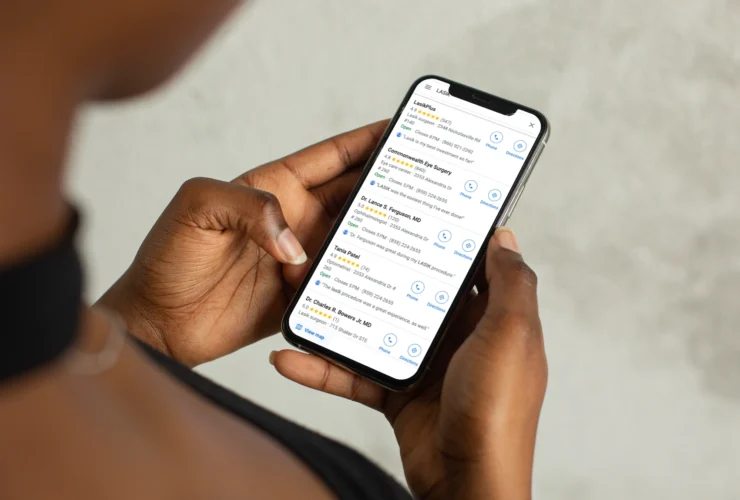The Impacts of Google’s Mobile-First Indexing for Doctors: What You Need to Know
Mobile-first indexing for doctors is a big deal. But what does it mean? Why should you care? In this blog post, we will answer these questions and more. You’ll learn about the impacts of Google’s mobile-first indexing, what it means for your website, and how to make the most of your mobile website to rank well on Google.
It’s official: the number of Google searches coming from mobile devices has exceeded the number of searches coming from desktops. Nearly 60% of search traffic comes from mobile devices, which means more and more prospective patients are viewing your practice website from a smartphone.
In response, Google rolled out mobile-first indexing in its search algorithms, a move that prioritizes sites that are mobile-friendly over those that are not.
In healthcare, mobile-first indexing has huge effects on how well you rank on Google and how many prospective patients you attract online. That’s a big deal.
A brief history of Mobile vs. Desktop
As the ways that people search change over the years, Google also changes its search algorithms accordingly.
Google first announced a change in how it evaluated mobile-friendly sites way back in 2015. If your website wasn’t mobile-friendly, it was likely to see declines in rankings.
At first, this caused a panic among SEOs and webmasters, who feared that Google’s changes would negatively impact their sites’ traffic (the mobile web was still fairly young, after all).
However, the panic was mostly unwarranted. While some sites were penalized for a poor mobile experience, most of the changes were relatively minor.
But in 2016, Google announced another change that would have an even greater impact: mobile-first indexing.
Mobile-first indexing
If you’ve been following Google algorithm updates over the past few years, then mobile-first indexing should sound familiar. It’s essentially a shift in how Google decides what pages to crawl and rank for its search engine results page (SERP).
These days, most patients search on mobile devices. For the longest time, Google still continued to crawl the desktop version of your site first to determine how well your site would rank for both mobile and desktop devices.
That all changed in 2018 with the introduction of mobile-first indexing.
While Googlebot used to start by crawling your desktop site, it will now go straight to your mobile website, just like the majority of your users.
Why You Need a Responsive Practice Website
Mobile-first indexing best practices require a mobile-friendly website: one that is easily accessed on any device, regardless of screen size. However, mobile-friendly does NOT mean the same as having a responsive site.
Responsive websites automatically resize for any device—desktop, tablet, or mobile—without needing a separate mobile and desktop design. This is a big change from the websites of the 1990s and early 2000s. There is no longer a desktop site and mobile site: the two are one and the same.
If you still have a separate mobile and desktop site, you should take some time to audit both sites in terms of mobile-first indexing. Chances are you’d be best served by redesigning your site to be responsive. It will help improve your Google rankings, make for a better patient experience, and reduce the amount of time and energy required to maintain two sites.
Google’s Mobile-First Indexing: A Huge Opportunity for Private Practices
If you already have a responsive site, you should not need to change much to optimize for mobile-first indexing. But if your mobile website needs some help, there’s a good chance it will need to be redesigned.
Google is all about delivering a great experience to its users, so if your website isn’t up to the task, you aren’t likely to rank well. And since 8 out of 10 patients start their search for a doctor on Google, poor rankings mean poor practice growth.
Here’s the secret: many private practice owners don’t pay attention to their mobile websites. If you can deliver a better experience, that could mean a huge opportunity to grow your practice and outrank your competition.
Mobile-first indexing is just a piece of the puzzle. You also have to deliver great content, demonstrate Expertise, Authoritativeness, and Trust, and use marketing strategies like SEO and paid ads to get the practice growth flywheel spinning.
But if you’re able to deliver as exceptional of an experience online as you do in your clinic, Google will reward you for it. So as the algorithms keep changing, do your part to adjust accordingly – delivering an exceptional experience is the best way to fast-track your practice growth.







